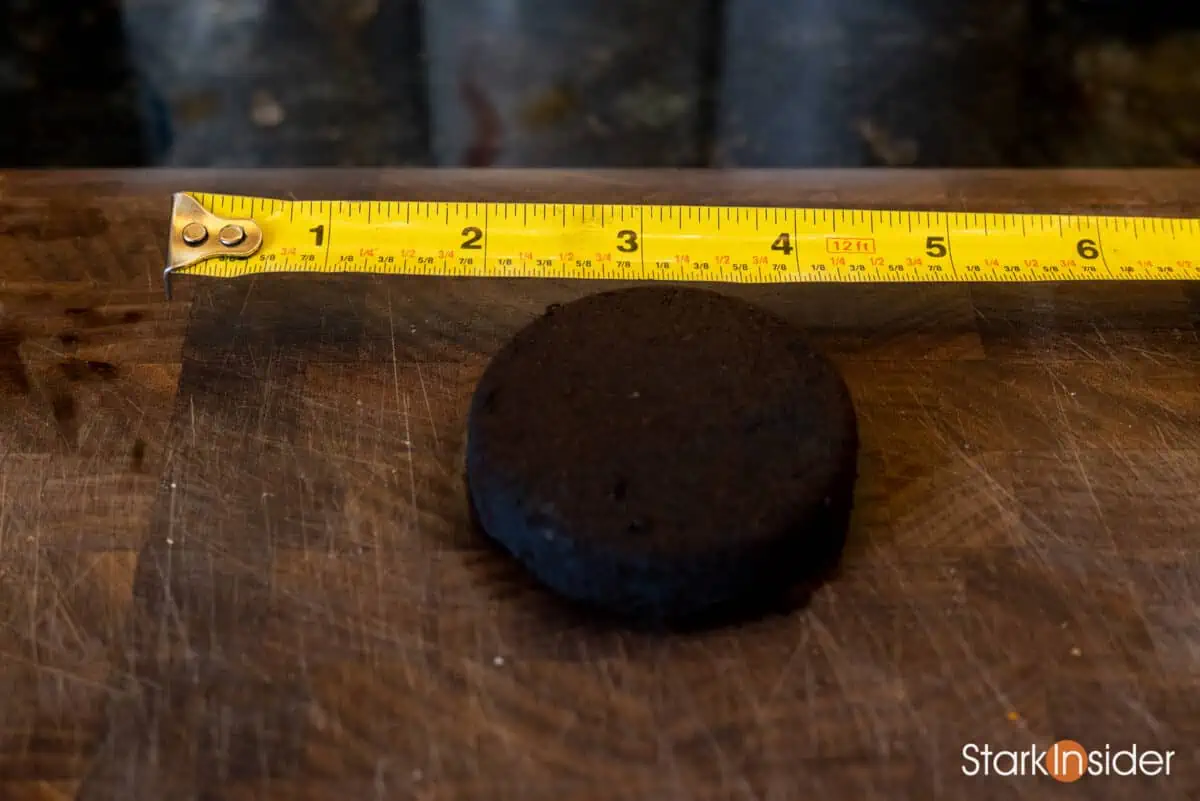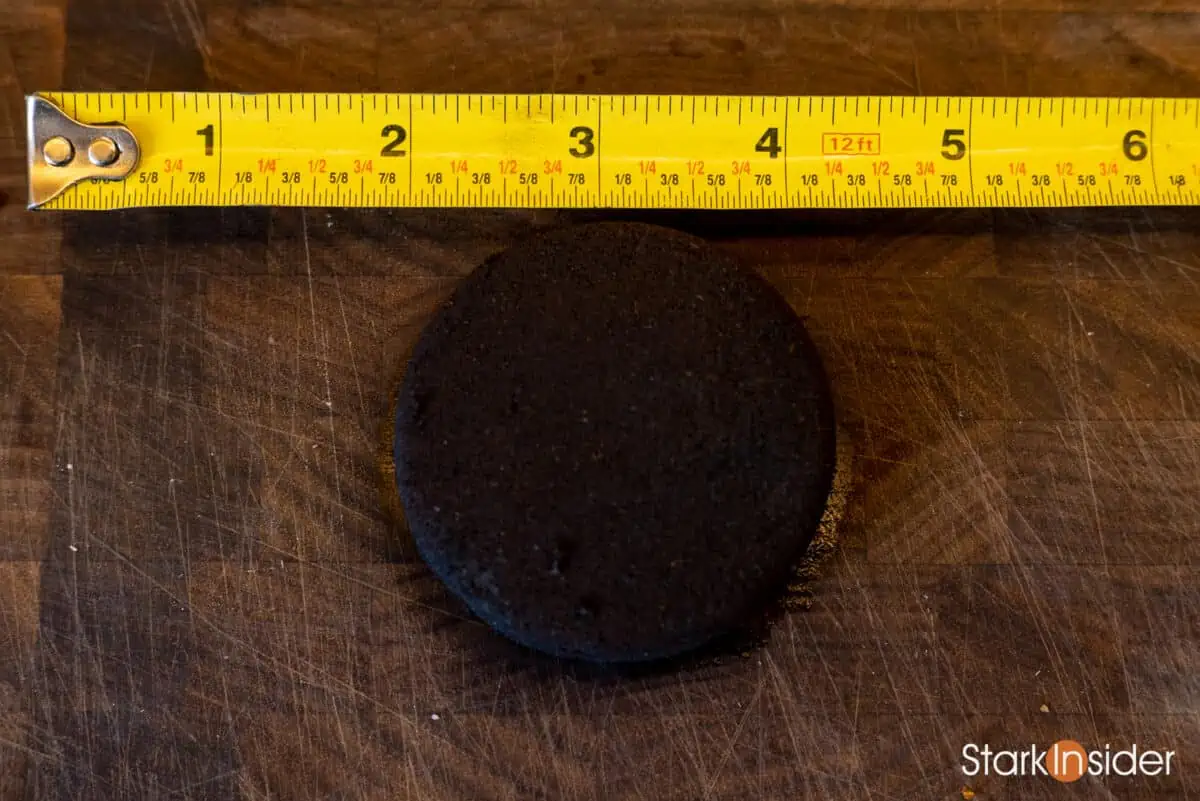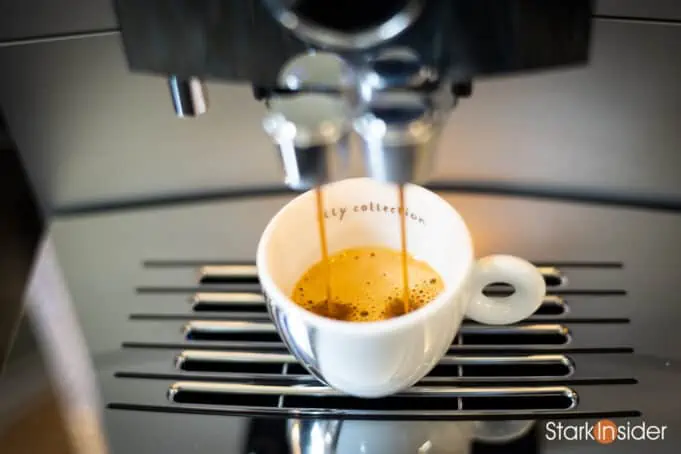We’ve been testing and evaluating the flagship Jura Z10 espresso machine here on Stark Insider. So far it’s been an intriguing experience. Jura definitely knows espresso.
But one metric to me is essential when evaluating espresso machines, and that is:
- The quality and characteristics of a used espresso puck
The puck is the leftover coffee grind that has been tamped and then extracted into an espresso brew. In the Z10 these are injected after a drink is made into a coffee grounds container located beneath the machine in the drip tray (which conveniently slides out for easy rinsing and cleaning). Tip: used coffee grinds and espresso pucks can be used to fertilize your garden and plants.
It’s worth noting all espresso machines, be they manual, semi-automatic, or super-automatic (bean-to-cup) like the Z10 all create spent pucks. On the super-auto machines they’re automatically ejected. On semi-auto machines the user has to remove the portafilter and eject it manually, typically into a knock box. You can watch baristas do this at coffee shops and cafes.
Espresso pucks can come in various sizes. However, on typical modern-day 58mm semi-automatic machines (Gaggia, ECM, Bezzera, Profitec, La Spaziale, Rancilio, Rocket Espresso, etc.) they should be about the same size. Thickness will vary depending how much coffee ground is used (dose) and the basket size in the portafilter.
So to the Jura Z10. I was able to pull out a fully intact puck from the coffee grounds container. Here’s what it looks like:
 Jura Z10 Super-Automatic: Measuring a Spent Espresso Puck
Jura Z10 Super-Automatic: Measuring a Spent Espresso Puck


Overall, it looks pretty good to my eyes. This puck was pulled immediately after a Cortado was brewed.
You can see it looks a little wet. In terms of size, the width is approximately 1.5-inches.
On the Jura Z10 you can adjust the overall strength on an espresso drink, which is essentially a way of changing the dose, or amount of beans that are ground and tamped. So you can expect some variation in the density and perhaps thickness of the puck.
 Jura Z10: Comparing the Super-Automatic Bean-to-Cup Machine to a Traditional, Semi-Automatic Espresso Machine
Jura Z10: Comparing the Super-Automatic Bean-to-Cup Machine to a Traditional, Semi-Automatic Espresso Machine
For fun, I of course wanted to know how the Jura Z10 compared to a semi-automatic, at least in terms of how the spent pucks appeared.
So I also brewed a Cortado drink on my Pasquini Livia 90 and also measured the puck (like a committed coffee nerd is wont to do):


Immediately we can see in the above photos the semi-automatic machine produces a bigger espresso puck. In this case I’m seeing about 2-inches in diameter, approximately. That’s about 1/2 an inch wider than the Jura Z10.
This particular puck looks like it was well extracted. Damp, but well formed and tamped, and with no puddling or extra water apparent. As expected the Cortado was pretty strong and rich, truly Italian style.
Note: I use a 20 gram basket filled with about 18 grams of fine grind. For beans I’m using Lavazza Super Crema. Great, but recommended only for those who like very strong espresso drinks with a lot of kick. Yes, they will wake you up in the morning.
 What Does Any of this Tell Us?
What Does Any of this Tell Us?

Really, this short test or comparison probably doesn’t tell us a whole lot. At the end of the day the true measure of an espresso drink is how good it tastes. Only you can really judge that. You can use scales, WDT for grind clump removal and (potential) consistency improvement, PID, flow control, graphs and all sorts of gizmos and DIY mods. But, at the end of the day: just taste the thing already!
Personally, I like to understand all these things, but at the end of the day, I approach my espresso machine with an air of whimsy. So I veer to the artistic, just go-for-it and see-what-happens approach. Why turn an art form steeped in history into a science lab experiment? Your semi-automatic Italian espresso machine is like a 70’s or 80’s Lamborghini, not a Tesla. Both are great. But embrace the analog experience of it all and the rocker switch!
I can say, unequivocally that in our tests the Jura Z10 produces an outstanding espresso pour.
In any case, related to the puck analysis above, there is another crucial measure of any espresso machine, be it a super- or semi-automatic. And that is the quality of a 2-ounce shot of straight espresso. No milk. No steam. Just the core building block itself.
RELATED:
Jura Z10 Review: The absolute best super-automatic espresso machine for home or office
I can say, unequivocally, that in our tests the Jura Z10 produces an outstanding espresso pour. Smooth and creamy without bitterness that I find that can sometimes rear its head on my semi-automatic machine — definitely Swiss in style.
Sure, the best baristas will likely do better, especially when it comes to micro-frothing. But for a one-button automatic machine in the comfort of your own home the Jura Z10 is pure class in terms of the baseline espresso shots, and, as it appears above, in producing a quality tamped espresso puck.
In the end is the Jura worth it?
We’ll revisit that question another day…


